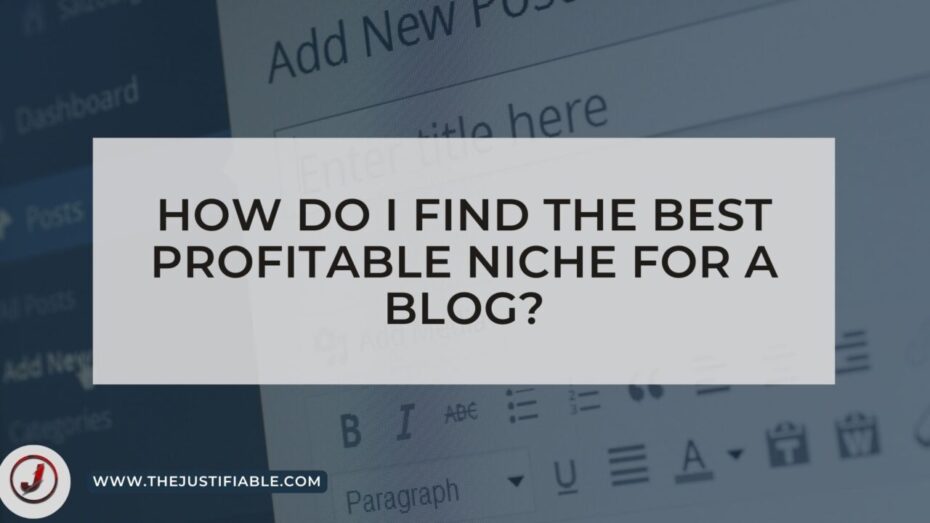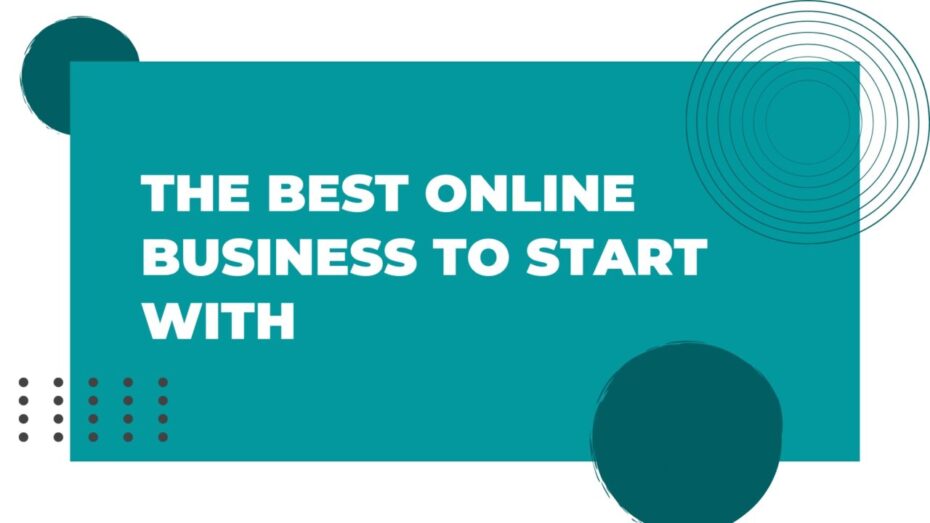Disclosure: This post contains affiliate links, which means that if you click on them and make a purchase, I will receive a commission. Read our Disclaimer for More.
How do I find the best profitable niche for a blog?
Starting a blog can be an excellent way to share your thoughts, ideas, and expertise with the world. But with so many blogs out there, it can be challenging to stand out and attract an audience.
One key to success is finding a profitable niche that is both interesting to you and in demand by potential readers. In this article, we will discuss the steps you can take to find the best profitable niche for your blog.
Step 1: Identify Your Passions and Interests
The first step in finding a profitable niche for your blog is to identify your passions and interests. What topics are you most passionate about? What topics do you enjoy learning about and discussing with others? These are the areas that will fuel your creativity and keep you motivated to create content.
Think about your hobbies, career, and life experiences. Do you have a unique perspective on a particular topic that you could share with the world? Do you have expertise in a specific area that others would find valuable?
For example, if you are a fitness enthusiast, you could start a blog about healthy eating, exercise routines, and workout tips. Or if you are an experienced traveler, you could share your experiences and advice on budget travel, adventure travel, or luxury travel.
Step 2: Research Potential Niches
Once you have identified your passions and interests, it’s time to research potential niches. Look for areas that are in demand but not oversaturated with competition. The goal is to find a niche that is profitable and has a potential audience.
Start by using keyword research tools such as Google Keyword Planner, SEMrush, or Ahrefs. These tools will help you identify popular keywords related to your niche and give you an idea of the search volume and competition.
Next, look at popular blogs and websites in your niche. Analyze their content, social media presence, and audience engagement. Look for gaps in their content that you could fill with your blog. For example, if there are no blogs focused on eco-friendly living in your area, you could fill that gap.
Step 3: Evaluate Profitability
After identifying potential niches, it’s time to evaluate their profitability. You want to ensure that your blog can generate revenue and be profitable in the long term. There are several ways to monetize your blog, such as:
Affiliate marketing: You earn a commission for promoting other people’s products or services.
Advertising: You earn money by displaying ads on your blog.
Sponsored content: You get paid to create content promoting a company’s products or services.
Digital products: You create and sell digital products such as e-books, courses, or webinars.
To evaluate profitability, look at the potential demand for your niche, the competition, and the monetization options. Look for niches that have a high demand and low competition, and multiple monetization options.
Step 4: Test Your Niche Idea
Before committing to a niche, test your niche idea. Start by creating a few pieces of content and see how they perform. Promote them on social media and see how much engagement they generate. Use Google Analytics to track traffic and user behavior on your website.
If your content performs well, and you see an increase in traffic and engagement, it’s a good sign that you have found a profitable niche. If not, it may be time to re-evaluate your niche idea and try something else.
Step 5: Define Your Target Audience
Once you have identified your niche, it’s essential to define your target audience. Who are the people that will be interested in your content? What are their needs, interests, and pain points?
By defining your target audience, you can create content that resonates with them and build a loyal following. You can also use this information to develop your brand voice and messaging, and tailor your marketing efforts to reach your ideal audience. Here are some steps to help you define your target audience:
Conduct Market Research
Conducting market research can help you understand your target audience’s needs, preferences, behaviors, and pain points. You can use various tools like surveys, focus groups, online forums, and social media to gather information.
Analyze Your Existing Audience
If you already have an existing audience, analyze their demographics, interests, and behavior. You can use tools like Google Analytics, social media analytics, and email marketing analytics to gather data.
Create Buyer Personas
Buyer personas are fictional representations of your ideal customers. They include demographic information, interests, behavior, pain points, and goals. Creating buyer personas can help you understand your target audience better and tailor your content to their needs.
Identify Your Unique Selling Proposition (USP)
Your Unique Selling Proposition (USP) is what sets you apart from your competition. Identify what makes your blog unique and valuable to your target audience. This can be your writing style, your expertise, your niche focus, or your content format.
Develop A Brand Voice
Your brand voice is how you communicate with your audience. It should be consistent, authentic, and aligned with your target audience’s preferences. Your brand voice should reflect your brand personality, values, and mission.
Step 6: Create High-Quality Content
Once you have identified your niche and target audience, it’s time to create high-quality content that resonates with your audience. Here are some tips for creating high-quality content:
Provide value: Your content should provide value to your audience. It should answer their questions, solve their problems, or entertain them. Your content should be informative, engaging, and relevant to your niche and target audience.
Use visuals: Visuals can make your content more engaging and memorable. Use high-quality images, infographics, videos, and charts to convey your message.
Write for your audience: Write your content in a way that speaks to your target audience. Use their language, tone, and style. Your content should be easy to read, scannable, and structured.
Be consistent: Consistency is key to building a loyal following. Develop a content calendar and stick to it. Your audience should know when to expect new content from you.
Optimize for SEO: Search engine optimization (SEO) can help your content rank higher in search engines and attract more organic traffic. Use relevant keywords, meta descriptions, alt tags, and internal and external links to optimize your content.
Step 7: Promote Your Blog
Once you have created high-quality content, it’s time to promote your blog and attract an audience. Here are some ways to promote your blog:
Social media: Use social media platforms like Facebook, Twitter, Instagram, and LinkedIn to promote your blog. Share your blog posts, engage with your audience, and participate in relevant communities.
Email marketing: Use email marketing to promote your blog and build your email list. Send newsletters, updates, and exclusive content to your subscribers.
Guest posting: Guest posting on other blogs in your niche can help you reach a new audience and build backlinks to your blog.
Influencer marketing: Collaborate with influencers in your niche to promote your blog and reach a new audience.
Paid advertising: Use paid advertising platforms like Adsterra or Pop Ads to reach a larger audience and drive traffic to your blog.
Common Mistakes to Avoid When Choosing a Profitable Niche for Your Blog
Choosing a profitable niche for your blog is crucial to its success. However, many bloggers make common mistakes when selecting a niche, which can lead to failure. Here are some mistakes to avoid when choosing a profitable niche for your blog:
Choosing a niche solely based on profitability: While it’s essential to choose a profitable niche, it’s equally important to have an interest or passion for the topic. Choosing a niche solely based on profitability can lead to burnout and lack of motivation to create content.
Not conducting enough research: It’s essential to conduct thorough research to understand your target audience’s needs and preferences, the competition in the niche, and potential monetization opportunities. Not conducting enough research can result in creating content that doesn’t resonate with your audience or not finding a profitable niche.
Choosing a niche that’s too broad: Choosing a niche that’s too broad can make it difficult to establish yourself as an authority and attract a specific audience. Instead, focus on a specific sub-niche within the broader niche to target a specific audience and provide value.
Choosing a niche that’s too narrow: On the other hand, choosing a niche that’s too narrow can limit your audience size and potential monetization opportunities. Find a balance between specificity and broadness to target a sizeable and engaged audience.
Not considering long-term potential: A profitable niche should have long-term potential, with opportunities for growth, expansion, and diversification. Choosing a niche that’s too trendy or seasonal can lead to a short-lived blog.
Ignoring your competition: Analyzing your competition can provide valuable insights into their content strategy, monetization methods, and audience engagement. Ignoring your competition can result in creating similar content, failing to differentiate yourself, and missing out on potential collaboration opportunities.






